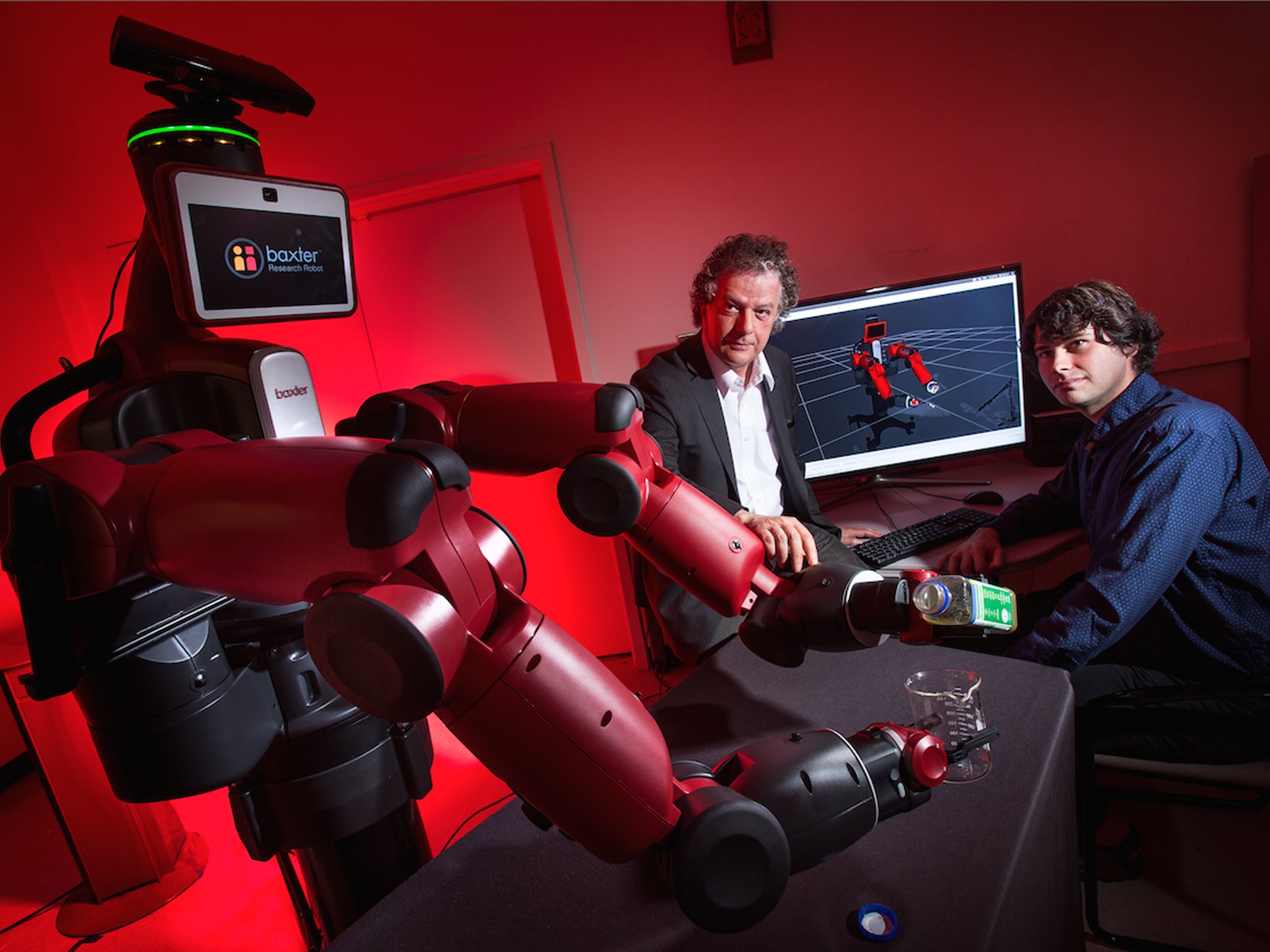YouTube videos are teaching military robots of the future to cook
YouTube — it’s a cookbook

Robots are being taught to cook by watching YouTube videos at a research institute in Maryland, and learning skills that could one day help them to be used in war.
The lessons — enabled by a process called “machine learning” that allows robots to learn like humans — are being used to test how well the robots of the future will be able to learn on their own.
To do so, test robots are shown “how to” cooking videos on YouTube. After watching them, robots were able to recognise, grab and use the right kitchen utensil or object and did tasks, without being told what to do by humans.
The robots can then share that information with others. Usually, sensors built into robots forget what they know each moment, and can’t use the information that they’ve built up.
The tests are being led by researchers at the University of Maryland, funded by the US Defense Advanced Research Projects Agency (Darpa). It is part of Darpa’s Mathematics of Sensing, Exploitation and Execution (MSEE) programme.
The programme was created to try and make robots that can sense the wold around them and then react to those, by themselves and without human input.
“The MSEE program initially focused on sensing, which involves perception and understanding of what’s happening in a visual scene, not simply recognizing and identifying objects,” said Reza Ghanadan, programme manager in DARPA’s Defense Sciences Offices. “We’ve now taken the next step to execution, where a robot processes visual cues through a manipulation action-grammar module and translates them into actions.”
In pictures: Artificial intelligence through history
Show all 7Through the ability to share the information, the robots will be able to build on what they’ve learnt and eventually become much faster.
“Instead of the long and expensive process of programming code to teach robots to do tasks, this research opens the potential for robots to learn much faster, at much lower cost and, to the extent they are authorized to do so, share that knowledge with other robots,” said Ghanadan. “This learning-based approach is a significant step towards developing technologies that could have benefits in areas such as military repair and logistics.”
The University of Maryland researchers presented their findings at a meeting of the Association for the Advancement of Artificial Intelligence last week. They have published their research in a paper, ‘Robot Learning Manipulation Action Plans by “Watching” Unconstrained Videos from the World Wide Web’.
Subscribe to Independent Premium to bookmark this article
Want to bookmark your favourite articles and stories to read or reference later? Start your Independent Premium subscription today.

Join our commenting forum
Join thought-provoking conversations, follow other Independent readers and see their replies